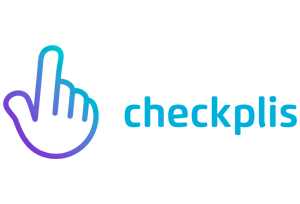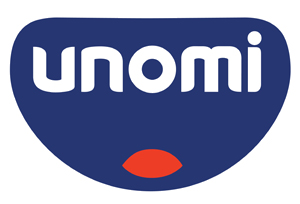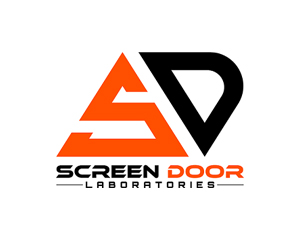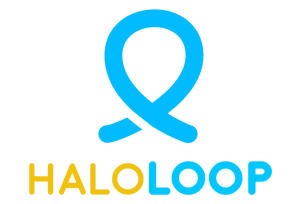While it seems that your fundraising journey may have been turned upside down because of COVID-19’s effects on the economy, rest assured there are still funders who are weathering the storm and actively looking for new deals. Although markets may change with the current economic circumstances, the process of fundraising and the criteria for creating a perfect pitch remains the same. Investors will be looking even more diligently into your specific market, competition, team domain expertise and the metrics of your company. At the Stubbs Alderton & Markiles, LLP Preccelerator®, a Los Angeles based accelerator program for early-stage companies, we have a strong emphasis on fundraising technique and strategy. Audrey Delaney of StarMetrics, one of our recent cohort company founders, provides a window into what has made her fundraising journey successful. I’ll follow up with insights on how to apply her advice to your own investor pitch.
Heidi: How important is the role of “storytelling” in your pitch?
-
Audrey: “Storytelling is the most important part of the pitch. Interestingly, I’ve found that it’s even more important to investors who aren’t too familiar with your product or industry – for them, it’s even more important that the story be clear and pretty simple. What is a problem or change that’s happening in the industry/sector now, what is your “a-ha” insight that gives you a window into the future of that problem? For me, the more I could get my pitch down to a few short sentences, the bigger the potential people can see in it.”
Investors hear or see hundreds, if not thousands of pitches per year, and a strong founder story about the pathos of your idea can set you apart from the noise, showcasing the “Why You,” the “Why Now” and “Why This” of your company without loads of data – but with a memorable narrative. The data is very important but comes later in a pitch. Ultimately, they are investing in “you.”
Heidi: When you started attending investor meetings to pitch your company, what was the one consistent piece of information you were asked most about?
-
Audrey: “For my product specifically, the most consistent question came around TAM (Total Addressable Market). Many VCs and investors feel that entertainment is a difficult market, and too small of a TAM. I have had to make a clear story/ path for how my product can reach $100mil, and how the TAM is large enough to support that.”
While a large market by itself will not sell your product, if you are looking to be a venture-funded company, you will need to be addressing a market of hundreds of millions or $1B minimum. If your market is smaller, that’s totally okay – you can be a very lucrative small business, rather than a venture fundable business. I hear a lot that “we are taking a small sliver of a huge pie” or “we are going to get 2% of an enormous market,” but that’s not helpful to investors when fundraising — especially if not all of that market is relevant to your product or service.
It’s best to take a bottom-up approach in calculating your market. Show investors by your analysis that you have a great understanding of the market dynamics, the customer’s buying behavior, and what’s going to motivate a purchaser to adopt your product. Estimate potential sales in order to determine a total sales figure. Where will your products be sold? What are the sales of comparable products? How much of those current sales can your company steal from competitors?
Other information to have perfected in your pitch includes:
-
Competitive Analysis – Never say “I have no competitors.” If there are no competitors – there is no market for your business. Define your competitors’ strengths and weaknesses compared to your company’s and where there are opportunities for your idea to flourish.
-
Revenue Model – How will you make money? Investors need to see a clear path to a return on their investment. Find recurring revenue. Don’t rely solely on data-driven revenue or ads. Make sure whatever the path to revenue – you showcase it clearly in your pitch.
-
Use of Proceeds and Needs – Make sure that you ask for enough funding to give you 18 months of runway (12 for performance, 6 for cushion while you fundraise again). Have your cost analysis completed to show to investors if they ask. Investors want to know what their funds will be used for (i.e. marketing, tech development, team growth), but also why you need THEM specifically. How can they be a resource to you on an advisory level or what partnerships and introductions can they make for you?
Heidi: How did your presentation style change from your very first pitch until today? Did you have to overcome any performance fears or challenges?
-
Audrey: “For me, I don’t have any real fears about speaking in public. But I have to work on making sure I come across as excited and enthusiastic, way more so than is my natural default mode – I’m pretty low key and analytical by nature. So for me, I have to put myself back into the mindset of when I first thought of the idea, and how exciting and game-changing that is – and then convey that.”
The bottom line is that you need to be confident and convey passion about your idea. If you are not comfortable as a public speaker – practice in front of people until you are. One of the benefits of joining an accelerator like the Preccelerator, programs like Women Founders Network’s Fast Pitch, or participating in one-off pitch events – is that you gain all of the necessary training to become comfortable and confident with your pitch. Many VCs would be happy to also give you valuable feedback on both your pitch deck and pitch presentation that you can utilize when you go to fundraise. If you have warm intros to willing investors in your network – don’t be afraid to ask!”
Heidi: Finally, what is one piece of advice that you would give a founder just starting out on their fundraising journey?
-
Audrey: “I knew that I was an expert in my product and industry, but not in the landscape of fundraising, VCs and so on. I think the best thing I did is to always be seeking and listening to those people with the experience you don’t have. For me, I needed to get expert insight on fundraising and how to grow – and so that was listening to mentors like SAM Preccelerator, angel investors, VCs, and other founders who had been through the process. There’s so much to figure out as a first-time founder, but there are a lot of people out there who know the path. And especially – if a few people are giving you the same piece of advice, it’s probably worth taking!”
Never stop learning. Surround yourself with individuals who have the experience and expertise that can take you and your company to the next level. Be coachable and heed guidance – but don’t bend like a reed in the wind with every different piece of advice. Be confident in your domain expertise and ability to build your idea!

HEIDI HUBBELING LEACH is the Chief Marketing Officer at Stubbs Alderton & Markiles, LLP. Throughout her 12-year career with SA&M, Heidi has been a consummate team player with the firm’s continued growth. Heidi’s experience in professional services marketing, relationship building, business development strategy and entrepreneurship has aided her in leading the Preccelerator Program, an accelerator program for early-stage startup companies housed out of the Santa Monica offices of Stubbs Alderton & Markiles.
While this program began as a marketing initiative for the firm, it has grown into a venture-backed accelerator over the past 7 years and has demonstrated the dedication that the firm has for startups in the LA ecosystem. As COO of the Preccelerator, Heidi sourced and provided due diligence for hundreds of applicants, developed the Program curriculum, a formal mentorship program with over 100 active mentors, and built a Partner Program with various strategic corporate partners. Utilizing her network and fundraising expertise, Heidi continues to provide investment strategy and introductions to capital for both Preccelerator cohort companies and SA&M clients.







